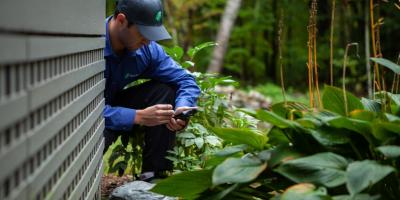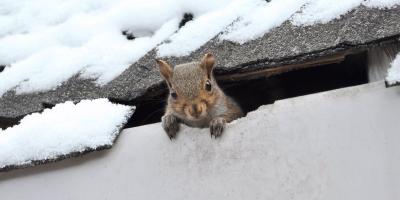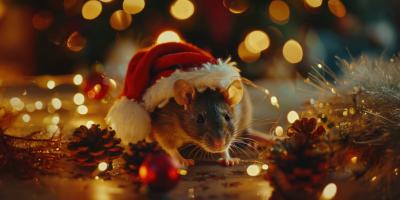Pests You Might Find In Your Christmas Tree

According to holiday enthusiasts, it is officially socially acceptable to start decorating for Christmas the moment you put your Thanksgiving leftovers into the refrigerator (even though most of us have been counting down the days since September). Many families set out to find their perfect tree shortly after the Thanksgiving festivities conclude. While the Christmas tree is a symbol of “the most wonderful time of the year,” there are certain pests that are known to hitch rides on Christmas trees, and they might end up right in your living room.
Here are a few Christmas tree pests that are even more unwelcome than certain in-laws or relatives during the holidays:
Spiders
It’s likely that at some point during the summer or fall, adult spiders inhabited your Christmas tree and laid eggs on the stems. Normally these eggs would remain dormant throughout the cold winter, hatching as the temperatures begin to rise again in the spring. Your warm and cozy house, however, leads the spiders to believe that spring has sprung, which may result in eggs hatching. Typically, if spiders are hiding in your tree, it's usually in small numbers and does not warrant any concern. In most instances, newly-hatched spiders (as well as other insects) will wander only a short distance before dying from desiccation (drying out). Spiders can be simply removed with a vacuum, whether they’re dead or alive.
Adelgids
White pine trees in particular will sometimes develop what is known as “flocking” on its bark and branches. This flocking comes from insects called adelgids, which are similar to aphids. Adelgids produce a waxy filament over their bodies to protect themselves and their eggs from winter temperatures. Trees infested by adelgids will lose precious nutrients, turning a greyish color before ultimately losing their needles. Typically, adelgids will cause death to pine trees within three to five years, but they are hardly a concern to harvested Christmas trees or homeowners.
Aphids
Like spiders, aphids may also hatch from eggs that were laid on your Christmas tree during the summer or fall. The most common type of aphid one might find on a Christmas tree is the white pine aphid, which feeds on sap from the needles and stems of the eastern white pine. Female aphids will lay a long row of shiny black eggs along pine needles. After a few days at room temperature, the eggs will hatch. Usually, these aphids will not live long enough to grow or multiply. Aphids (and adelgids) can be removed with a vacuum cleaner.
Did you find a few unexpected presents living in your Christmas tree? The experienced professionals at JP Pest Services can protect your home from transported pests. Contact JP Pest Services to request a free residential estimate today!



